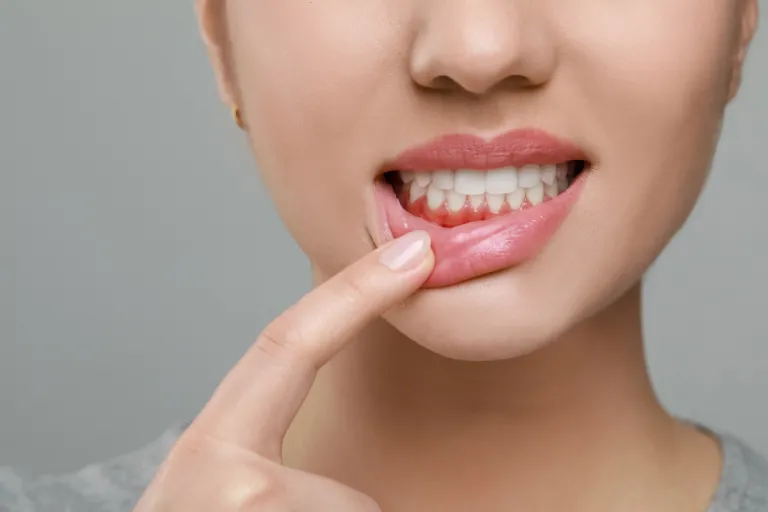In oral health, bleeding gums have long been a familiar sign of gingivitis, often dismissed with a mental note to floss more diligently. However, a growing body of scientific evidence is reframing this common symptom. The term “leaky gums,” a concept similar to the more widely discussed “leaky gut,” is gaining traction. It suggests the issue is not just on the surface but is a breach in the body’s defences with potential wider effects on the body. This article explores the different views on leaky gums to provide a clear overview of its causes, implications, and the various ways to manage it.
A Breach in the Barrier
From a conventional dental perspective, “leaky gums” is understood as increased gingival permeability. The gums, or gingiva, form a crucial barrier that acts as a seal around the teeth. This protects the tissue and bloodstream underneath from the dense microbial community in the mouth.
When oral hygiene is not optimal, a sticky film of bacteria, known as plaque, builds up at the gumline. This triggers an inflammatory response from the body, leading to gingivitis, which is characterised by red, swollen, and bleeding gums. If left unaddressed, this inflammation can progress to periodontitis, a more serious gum issue where the supporting bone and fibres that hold teeth in place are permanently damaged.
The “leakiness” happens because of the breakdown of the tight seals between the gum’s epithelial cells due to this chronic inflammation. This weakened barrier allows bacteria and their inflammatory byproducts to get into the gum tissue and enter the bloodstream. This breach is a key factor in the link between periodontal disease and a host of widespread health issues, including heart problems, blood sugar regulation problems, and joint pain.
Conventional therapy for increased gingival permeability focuses on removing the bacterial trigger. This includes:
- Professional dental cleanings to remove plaque and tartar (hardened plaque).
- Scaling and root planing, a deep cleaning procedure to remove plaque and tartar from below the gumline.
- Improved oral hygiene through rigorous brushing and flossing.
- Surgical interventions in advanced cases.
The Gut-Gums Connection
The body can be viewed as an interconnected system. From this perspective, “leaky gums” are often seen as a sign of a broader systemic issue, closely linked to the health of the gut. The idea of a gut-gums axis is key to this understanding.
The mucous membranes of the mouth and the digestive tract are part of one continuous surface. It is thought that factors leading to intestinal permeability, or “leaky gut,” can also affect the oral barrier. These factors include:
- Poor Diet: A diet high in processed foods, sugar, and unhealthy fats can encourage the growth of unhelpful bacteria in both the gut and the mouth, fuelling inflammation.
- Nutrient Deficiencies: Not enough vitamin C and D, coenzyme Q10, and zinc can affect the body’s ability to maintain healthy connective tissue and a strong immune response.
- Chronic Stress: Stress can change the makeup of the oral and gut microbiome and increase systemic inflammation.
- Gut Dysbiosis: An imbalance in the gut microbiome can lead to a systemic inflammatory state that affects the gums.
An integrativel medicine approach aims to restore systemic balance through personalised nutrition, protocols to support gut health, stress management, and targeted supplementation to address specific nutrient deficiencies.
Steps Toward Optimal Gum Health
The integrative approach offers the most comprehensive strategy for managing leaky gums. This might involve:
- Collaborative Care: A user working with their dentist and other qualified health professionals.
- Foundational Oral Hygiene: Diligent brushing and flossing are non-negotiable.
- A Whole-Body Approach to Diet: Focusing on anti-inflammatory, nutrient-dense foods.
- Stress Reduction: Using practices that promote a balanced nervous system.
- Personalised Interventions: Utilising targeted supplements, herbs, and acupuncture to address individual needs.
Conclusion
The seemingly minor issue of bleeding gums can be a window into our overall health. By moving beyond a purely localised view and embracing a range of insights, we can better understand and address the root causes of “leaky gums,” leading to not only a healthier mouth but a healthier body as a whole.
Medical Disclaimer: This article has been written by a licensed health professional and is intended for general informational purposes only. It does not substitute for personalised medical advice, diagnosis, or treatment. Readers should always seek the guidance of a qualified healthcare provider with any questions regarding a medical condition or health objectives. Never ignore or delay seeking medical advice based on information presented here.
Subscribe for Free for more insightful health articles tailored to your needs.
References
- Cecoro G, Annunziata M, Iuorio MT, Nastri L, Guida L. Periodontitis, low-grade inflammation and systemic health: A scoping review. Medicina (Kaunas). 2020;56: 272.
- Shetty B, Fazal I, Khan SF, Nambiar M, D KI, Prasad R, et al. Association between cardiovascular diseases and periodontal disease: more than what meets the eye. Drug Target Insights. 2023;17: 31–38.
- Park S-Y, Hwang B-O, Lim M, Ok S-H, Lee S-K, Chun K-S, et al. Oral-gut microbiome axis in gastrointestinal disease and cancer. Cancers (Basel). 2021;13: 2124.
- Xi M, Ruan Q, Zhong S, Li J, Qi W, Xie C, et al. Periodontal bacteria influence systemic diseases through the gut microbiota. Front Cell Infect Microbiol. 2024;14: 1478362.
- Kim M-Y, Pang E-K. Relationship between periodontitis and systemic health conditions: a narrative review. Ewha Med J. 2025;48: e27.
- Park D-Y, Park JY, Lee D, Hwang I, Kim H-S. Leaky gum: The revisited origin of systemic diseases. Cells. 2022;11: 1079.
Last Updated on August 29, 2025



